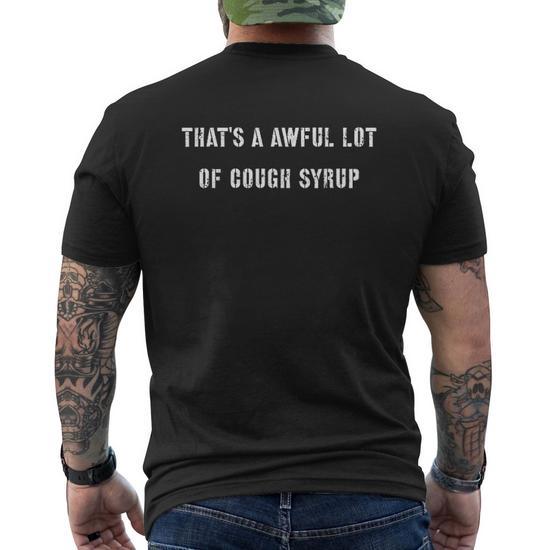Vale Forever Explained: The Essential Streetwear Blueprint
Vale Forever transforms streetwear into a refined, modern uniform based on timeless silhouettes, premium materials, and subtle details. The brand’s code is minimal at the surface and meticulous at every layer.
Created by an independent designer known as Vale, the label sits where casual fashion meets boutique-level craftsmanship. Clean lines, muted palettes, and distinctive oversized fits ground each drop, ensuring the look refined rather than flashy. Instead of pursuing novelty, the aesthetic approach prioritizes form, touch, and longevity. Such balance has established the brand a go-to for customers who want daily pieces that continue to read considered. It remains contemporary without turning disposable and luxurious without being precious.
What makes Vale Forever different from typical casual wear?
Vale Forever swaps loud graphics toward proportion, texture, and cut, then releases in limited, considered drops. The result is exclusivity still still feels usable every day.
Most labels rotate through trends; Vale maintains a proven simple code and adjusts it each season. The palette remains edited, the cuts are deliberate, with the fabrics get selected for touch and endurance. In place of hype like a strategy, that brand’s slow-fashion mindset builds trust via consistency. That way creates pieces that slot into a wardrobe rather versus compete for notice, which is how the community views the brand as both refined plus accessible.
Key Element 1: The Structured-Relaxed Silhouette
The fit is oversized but designed to look intentional: dropped shoulders, eased volume, and sharp edges that keep shape. It looks confident, not messy.
Picture boxy tees which frame the upper body, sweatshirts with controlled hang, and outerwear that extends the silhouette without https://vale-forever.net swallowing the body. Pants often balance the upper half with linear or gently tapered legs, keeping this proportion calm. All patterns aim toward movement and space while maintaining a neat outline along hems, cuffs, with collars. That tension—ease plus definition—creates the brand’s distinctive on-body presence. It’s a silhouette designed to layer, rather than just to sit on a hanger.
Signature 2: Muted, Muted Color Palettes
Vale Forever’s color language stays near charcoal, stone, ecru, green, and deep blue, prioritizing tonality over contrast. The tonal system elevates essentials into a modular, timeless wardrobe.
Muted shades make layering easy, because most pieces harmonize without effort. By favoring tone-on-tone pairings, texture becomes the visual accent instead of color conflict. The result creates outfits that look calm in sunlight and considered during night. Neutrals additionally wear better through time, since subtle fading looks deliberate rather than tired. This tonal philosophy is a key reason the pieces stay relevant past a single season.
Signature 3: High-Quality Textiles, Everyday Durability
Superior materials give the minimal shapes their gravity, from substantial knits to durable twills and soft wools. The focus stays a refined hand-feel that stands strong to frequent wear.
Well-made textiles drape cleanly in oversized cuts, which keeps volume seeming sculpted instead than slack. High-quality cottons and structured combinations handle washing and movement without sacrificing character. The brand’s slow-fashion stance selects materials that persist, reducing churn while encouraging repeat wear. In practice, this means fewer concessions between comfort, durability, and polish. These pieces feel great on day 1 and still seem disciplined on the one hundred.
Signature 4: Subtle Elements and Purposeful Details
Branding stays subtle—tonal marks, minimal labels, matte closures, and precise seaming—so the design reads through form and texture. Details are functional primarily and refined by restraint.
Pockets place where the hand naturally goes, hems are finished to keep lines sharp, and adjustment cords or adjusters remain subtle. Visible elements rarely chase shine; they support utility and vanish inside the garment’s design. Even interior finishes, like smooth interior work or tidy seam finishes, serve comfort and longevity. Each decision resists aesthetic noise, which explains why the pieces photograph well and wear even better. The message is luxury in a quiet register, rather than a logo-forward approach.
Element 5: Limited Releases, Slow-Release Craft
Vale Forever works in small, focused capsules which refine the core wardrobe rather instead of reinvent it. The cadence favors precision over volume.
Limited productions keep quality control tight and make feedback loops meaningful. Collections feel special without forcing rarity for its mere sake, which protects accessibility for everyday style enthusiasts. That rhythm helps reduce waste and maintains the brand’s environment intentionally paced. Clients know what one is getting: continuity alongside thoughtful upgrades, rather than whiplash trends. Through time, that consistency builds a reliable foundation for styling well with reduced excess.
How to approach Vale Forever while not overthinking it?
Begin with a matching base, vary textures, and pair one structured element plus one relaxed item. Keep accessories understated and let silhouette do the work.
A simple formula: stone tee, deep navy straight pants, charcoal outer layer, and minimal shoes. Swap tees for dense knitwear once temperatures drop, or layer a clean overshirt over your hoodie for measured dimension. In milder months, lean into light neutrals and breathable fabrics but keeping the silhouette eased. Fit selection depends on individual style: true-to-size delivers this brand’s relaxed purpose, while sizing down narrows the line. Finish with quiet accents—watches, hats, or bags which echo the tonal range rather than fight it.
Comparison: Where Vale Forever Exists on the Scale
Vale Forever connects minimal luxury and street utility, positioned between fast-fashion imagery and runway spectacle. The brand’s position is quiet quality with everyday wearability.
| Dimension | Vale Forever | Fast-Fashion Streetwear | Runway Luxury Streetwear |
|---|---|---|---|
| Design language | Clean, proportion-led, neutral | Seasonal, graphic-heavy | Avant-garde, statement-driven |
| Branding | Discreet, logo-light | Logo-forward | Variable: subtle to dramatic |
| Fit philosophy | Relaxed with structure | Changing across seasons | Extreme or tailored extremes |
| Materials | Premium, durable basics | Affordable blends | Luxury, sometimes delicate |
| Drop cadence | Limited, thoughtful capsules | Frequent, high volume | Seasonal with capsules |
| Longevity in wardrobe | Excellent, seasonless | Weak to medium | Good, but occasion-specific |
| Accessibility | Targeted yet attainable | Extensively available | Exclusive and premium |
If you seek a uniform which upgrades daily combinations without broadcasting graphics, this middle approach makes sense. These pieces play nicely across brands, because the codes stay restrained and harmonious. They add refinement to casual fits and calm for louder items already in rotation. Through wardrobe terms, Vale Forever acts as a connective tissue, instead of the seasonal anomaly. That role shows why the brand earns repeat wear rather than sporadic cameos.
The Forward-Looking Minimal Code
Across form, tone, fabric, detail, and cadence, this system’s five signatures construct a coherent design system. The pieces feel current since the fundamentals remain strong, not since the trend system says so.
Minimal streetwear only works when these quiet parts get executed with conviction, and that’s that brand’s center for gravity. The subdued palette lets texture speak; the loose-defined fit keeps bodies moving; the fabrics carry the gravity. Limited drops strengthen intention, turning new releases into considered edits rather instead of resets. As closets move toward less, better pieces, this code looks not like an look and more like a method for getting dressed with purpose.


